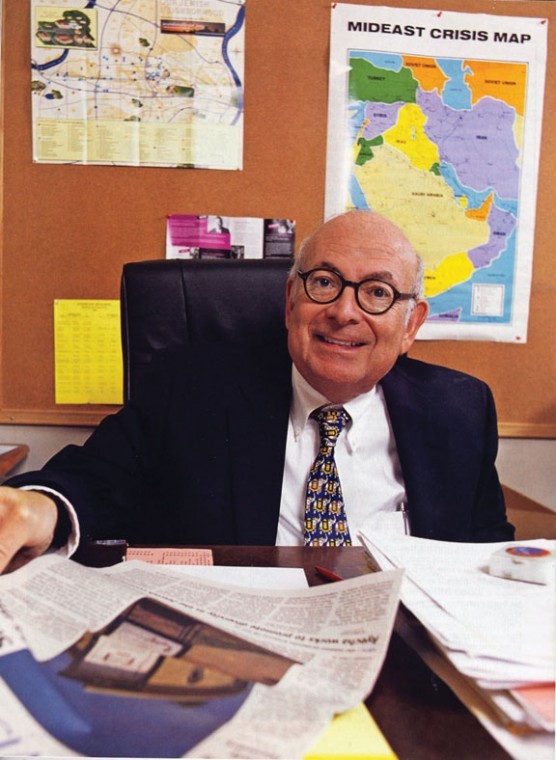Major milestones for United Hebrew, Temple Israel
Published October 31, 2012
In August, a Cohnipedia column addressed the on-again-off-again and finally off merger courtship between United Hebrew Congregation and Temple Israel—two storied St. Louis congregations whose rabbis and lay leaders have been among the true giants of the St. Louis Jewish community.
Although both United Hebrew and Temple Israel are Reform congregations, the two synagogues have distinct historical and cultural narratives, which made the talks of merger seemed doomed from the start. In recent days, United Hebrew began celebrating its 175th anniversary while Temple Israel has been marking its own 125th anniversary, dating back to its origins back in 1886.
ADVERTISEMENT
United Hebrew
The congregation dates its official origin back to the year 1837, when according to local Jewish historians the first minyan, or organized Jewish prayer service took place. There is some dispute about whether the year for the first minyan was 1837, 1836 or even 1838. The late and esteemed historian Walter Ehrlich, in the first volume of his history of the St. Louis Jewish community, “Zion in the Valley, Vol. I,” cites earlier research by colleague Donald I. Makovsky and sorts through the disputed dates before settling on 1836. However, the U.H. leadership officially decided on 1837 as its founding date.
A congregational history notes the first minyan took place “in a rented room above Max’s Grocery and Restaurant on Second and Spruce streets, a location that is now part of the Gateway Arch grounds in downtown St. Louis.”
United Hebrew adopted its charter on Oct. 3, 1841, according to Ehrlich at a meeting at the Oracle Coffee Shop at 24 Locust Street. The 12 men attending unanimously approved the proposed constitution and by-laws, Ehrlich writes.
The congregation established its first home in 1848 in a former church on Fifth Street, between Washington and Lucas avenues
ADVERTISEMENT
One fact that might surprise local Jews is that United Hebrew “started as strictly Orthodox,” according to Ehrlich. The congregation originally maintained a mikveh, a mohel and a schochet.
When Rabbi Isaac Mayer Wise — the founder of the Reform Jewish Movement — visited St. Louis in 1855, he was received “rather cooly” by U.H. members, Ehrlich writes.
Its first rabbi, Dr. Bernard L. Illoway, who started at U.H. in 1854, was himself Orthodox. Rabbi Illoway resigned his position after a year, arguing that the congregation’s seeming embrace of Reform tenets went against his core principles.
In 1878, the congregation joined the Union of American Hebrew Congregations (now the Union for Reform Judaism) — although it withdrew from UAHC in 1885 and rejoined in 1904.
Temple Israel
It was a rabbinic resignation that also played a role in the origins of Temple Israel back in 1886. Temple Israel’s early history is well chronicled in Dr. Samuel Rosenkranz’s “A Centennial History of Congregation Temple Israel, 1886-1986.”
He recalls the series of events that led a group of Congregation Shaare Emeth members to break away and form Temple Israel. Shaare Emeth, which was organized in 1867 and chartered in 1869, had elected Rabbi Solomon Sonneschein to serve as the congregation’s spiritual leader. “The eloquence and scholarship of Rabbi Sonneschein were instrumental in establishing Shaare Emeth as one of the most important congregations in the West. But differences of opinion in theology and philosophy between his liberal group and those with more traditional points of view in the congregation arose in 1886,” Rosenkranz wrote.
“Rabbi Sonneschein’s attitude reflected the great wave of liberal thinking which was sweeping parts of Europe and the United States. Since the majority of the Board of Trustees were sympathetic with the conservative group, Rabbi Sonneschein submitted his resignation. On Sept. 24, 1886, a group who had supported the liberal views of Rabbi Sonneschein at Shaare Emeth, met at the home of Moses Fraley, 3650 Lindell Boulevard, and passed several resolutions expressing their liberal views and attitudes. A new congregation, Temple Israel, was then formed with Rabbi Sonneschein as its spiritual leader.”
The new congregation’s first official meeting took place on Oct. 10, 1886 at the Pickwick Theatre Hall, located at Jefferson and Washington avenues.
By 1887, the congregation had laid the cornerstone of its first synagogue building at 28th and Pine streets. That served as Temple Israel’s home until the dedication of the congregation’s newly constructed building at Kingshighway and Washington boulevards.
Thus were born United Hebrew, originally an Orthodox synagogue which later joined the Reform Movement, and Temple Israel, which embraced from the very start not only Reform Judaism, but an explicitly “liberal” or “Classical Reform” approach.














